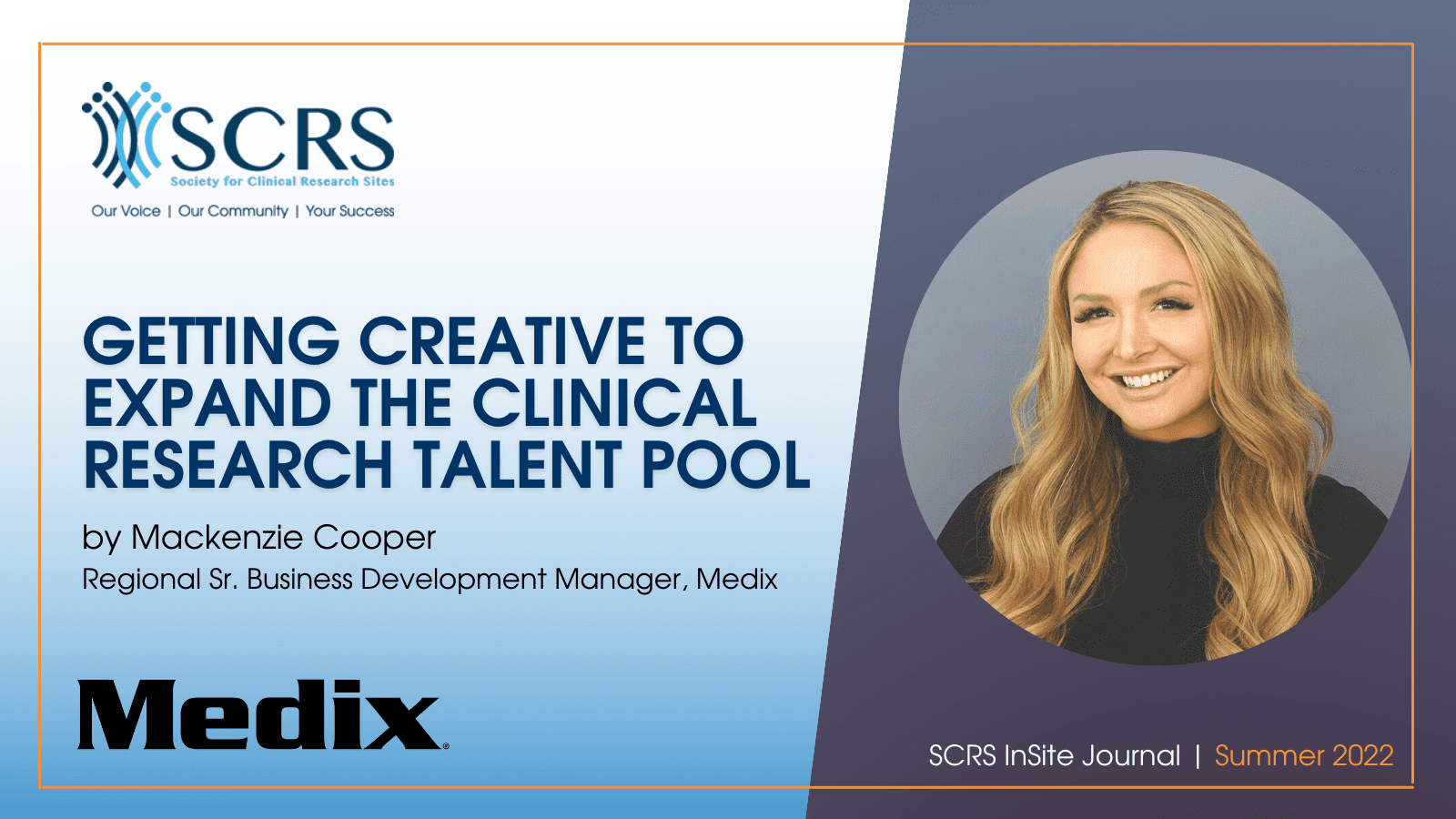Getting Creative to Expand the Clinical Research Talent Pool

Perspective from Mackenzie Cooper, National Director of Business Development, Clinical Research
When you ask someone how they started their career in clinical research, all too often the response is, “I just sort of fell into it.” While this can be a curious phenomenon at first, the more you think about it, the more it makes sense. Roles at research sites require a variety of skill sets that can be found scattered across the life sciences and healthcare fields. Employers who recognize this fact have an advantage when faced with a tight labor market.
4 Candidate Backgrounds to Consider
If you’re having a tough time hiring right now, consider sourcing new job candidates from these creative backgrounds:
- Medical Assistants (MAs) have great clinical skills from experience with activities like drawing blood and taking vitals. They also have a deep knowledge of medical terminology. Usually after 4 to 5 years in the role, these professionals may decide to go back to school to be a nurse or change career paths.
- Lab Technicians/Assistants with previous customer service experience can also be a great fit. For example, a graduate student in a life sciences program who spent time as a server would qualify in this scenario. After a year or so of running assays at the bench, some techs realize that they miss human interaction. They are passionate about drug discovery and healthcare, but want to interact with people, too.
- IRB Operations Coordinators work at an IRB and help gather documents from clinical research coordinators. This close connection with CRCs and site processes provides a natural pivot point for individuals interested in taking a new career path.
- Medical Scribes are well-versed in all-things documentation. The experience that comes from working in direct collaboration with physicians, in-depth knowledge of EHR systems and exposure to patient interactions can be invaluable for starting a career in clinical research.
Considering job candidates with backgrounds like these offers clinical research teams a creative pathway to staffing success. Crucially, it’s a solution that expands the hiring pool by highlighting individuals who may not be actively searching for research-only roles, while weeding out others who have neither the experience nor interest in the field needed to make this change.
It’s Time to Get Creative in Clinical Research Sourcing
By identifying individuals with experience in key areas, such as comfort with research terminology and desire for patient interaction, employers can begin hiring with a focus on growth potential. Training and upskilling programs can fill in the gaps where needed. However, the biggest questions have already been answered. Job candidates working in these roles have figured out that they have a passion for making an impact in the lives of patients. Now, they just need a team to support them during the transition from a job to a career in research that can last a lifetime.
Need help hiring clinical research talent? Talk with a Medix expert today.
Note: This article originally appeared in the Summer 2022 edition of SCRS InSite: The Global Journal for Clinical Research Sites.

Work with a Trusted Healthcare & Life Sciences Staffing Partner
Connect with Medix to get the expertise and resources you need to succeed.
